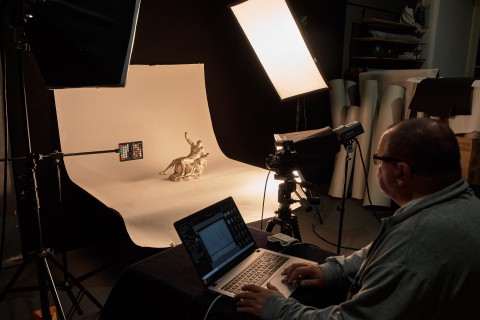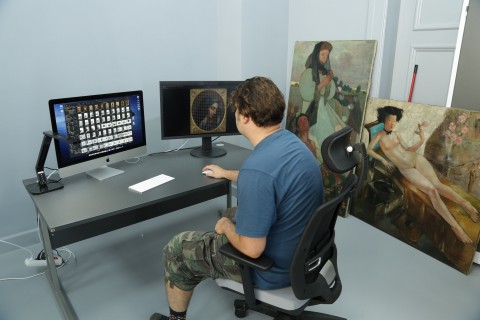Digitisation or where works of art on the Internet come from
Do you have items at home with reproductions of the most famous works of art? Have you ever rummaged in digital collections, or maybe even used them to create your own compositions? But do you know what must happen for the photographs of such exhibits to appear on the web?
A few facts
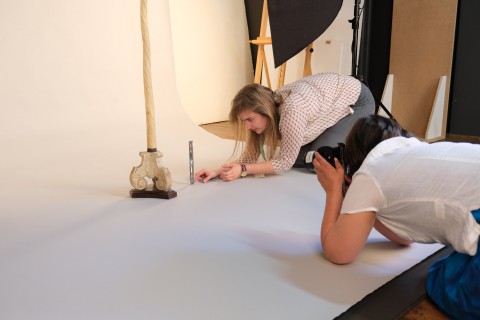
Digitisation is a complicated process, although it might seem that there is nothing easier – just take a photo. What is the problem if the cameras in our phones take high-quality photos, and we post a lot of photos on social media every day? Digitising works of art is different from ordinary photography. The point is to obtain the most faithful digital image of a given exhibit, and it is not that simple.
So how is the digital image of a work of art created? It is worth finding out by looking at the project “www.muzeach” , in which five institutions participate: the Museum of King Jan III's Palace at Wilanów, the POLIN Museum of the History of Polish Jews, the National Museum in Lublin, the National Museum in Szczecin and the Castle Museum in Łańcut.
The project uses high standards of documentary photography as well as various advanced digitisation techniques:
- two-dimensional, such as photography, RTI and gigapixel;
- three-dimensional, such as structured light scanning and photogrammetry.
However, let us focus on the apparently simplest technique, i.e. digital photography, which is one of the most frequently used techniques in the project. “High-quality photographs of selected museum exhibits are published together with a dictionary description, a label, and a broader popularising description,” says project manager Michał Ochremiak. “These databases of digitised exhibits from five museumswill be available to everyone for free through a website with a multiple search engine, which was also created during the project,” he adds.
Stages of digitisation
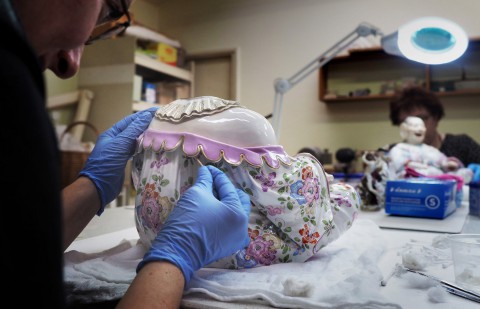
First, an exhibit is selected, then its condition is checked. If necessary, it is sent to a conservation studio, where appropriate work is done on it. In the photo studio, the exhibit is under constant care of conservators. During the session, special colour calibration targets with multi-coloured fields are used, which allows you to control the quality of colour reproduction in the photo.
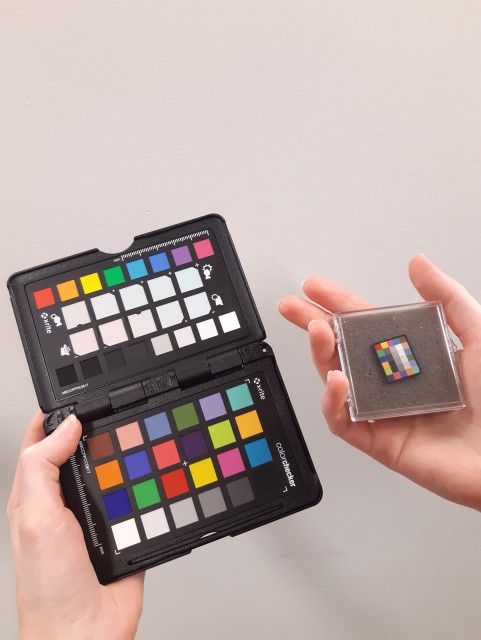
“Most colour calibration targets have a ruler that shows the scale of the exhibit. The most important thing, however, is that it allows us to check the white balance and make sure that the exhibit in the photo will actually be the same colour as it actually is,“ says Joanna Młynarska, a photographer working on the project. “We must not forget that the colour of a museum exhibit in a photograph may differ from the colour of the real object. On the Internet, there are some commonly known images with distorted colours that falsify the appearance of the originals. With professional digital documentation, we should not and will not allow it,” she adds.
The next step in digitisation is file post-production, which requires much more time than taking photos. First, a digital negative is developed, producing a photo with the correct colour temperature, which is then cleaned. Next, it is checked for quality, and only after that the correct files are prepared and placed on the website together with a metadata description for each one of them. At the same time, popularising descriptions are created, which will be posted on the website too (also in English) and will be a source of knowledge and interesting facts about a given exhibit.
As you can see, specialists in many fields work together at different stages in this task: collection custodians, art conservators, transport specialists, photographers, digitisation specialists, editors, translators and programmers. Therefore, logistic factors are not without significance here: coordination of the work of photographers and conservators, verification by controllers of the quality of the photographs and of the data that will eventually be found on the Internet. Cooperation between project participants in various institutions is also very important, which allows for the use of unified dictionaries to describe museum collections.
Variety of works of art and exhibits
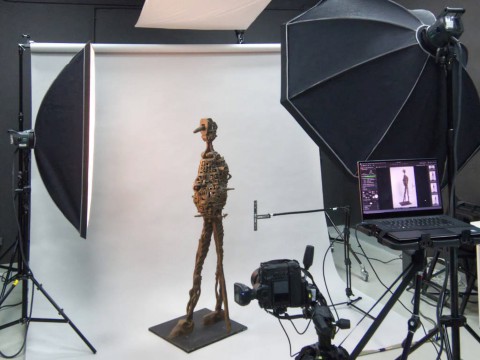
The exhibits photographed for digitisation include a wide variety of collections: from prehistoric and ancient art, through the art of the Far East, to contemporary art. These are sculptures, drawings and graphics, paintings, artistic craftsmanship, archival photos and everyday objects such as maps and furniture.
Large-size exhibits require a special approach. Some particularly valuable or particularly large exhibits could not have been transported to the photo studio. It was necessary to arrange the set elsewhere, as was the case, for example, in the Castle Museum in Łańcut or the Museum of King Jan III’s Palace at Wilanów. With large-size cabinets, it is also difficult to reproduce the scale and proportions.
Flat, heavily varnished exhibits with visible painting structures such as “The Forest” by Leon Wyczółkowski from the National Museum in Szczecin, as well as exhibits that generate reflexes, such as glazed ceramics and glass, are also quite a challenge. Particularly challenging was the digitisation of the 17th-century mirror clocks from the Wilanów collection, as well as paintings by Leszek Golec and Tatiana Czekalska from the collection “White Vege Fur. Performance for Photography” from the National Museum in Szczecin, because they are black mirrors reflecting everything on their surface.
Obvious results
Thanks to participation in the project, digitisation laboratories were expanded in most museums – specialised software and equipment were purchased, such as boards, colour calibration targets, specialised lamps and many other necessary tools. The POLIN Museum of the History of Polish Jews and the National Museum in Szczecin gained their first digitisation studios thanks to the project. The work system at the National Museum in Lublin also changed. It is not without significance that participation in the project enabled digitisation specialists from various institutions to share experiences. The established common standard allows for even more precise creation of faithful representations of works of art, which not only facilitates the work of conservators, but also increases the usefulness of files for everyone who may use them in the future – whether for pleasure or for scientific purposes.
“Throughout the project, over 7,000 exhibits are being digitised. These are selected historic objects and resources belonging to the collections of five partner museums. They are digitised using various techniques. As for the publication of digital collections on a common website, over 10,000 exhibits will be published in the project. We also use the documentation that we had before the start of the project,” explains Michał Ochremiak.
Benefits of digitisation
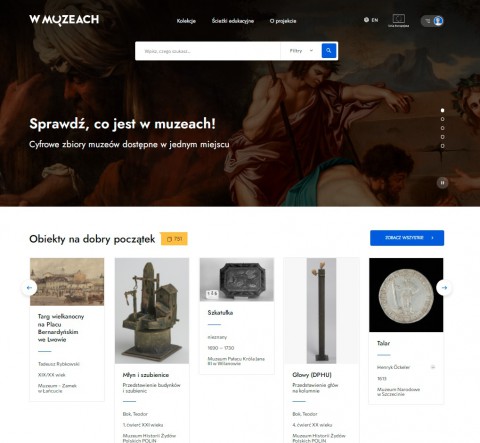
As part of the project, a joint website with a multiple search engine has been created – its development ended on September 21st, 2021, a systematic data transfer is currently underway, and all interested parties will be able to use the website as early as January 1st, 2022.
The wmuzeach.pl website hosts in one place the digitised collections of: the Museum of King Jan III’s Palace at Wilanów, the POLIN Museum of the History of Polish Jews, the National Museum in Lublin, the National Museum in Szczecin and the Castle Museum in Łańcut. Other museums will also be able to publish their collections here.
The project “www.muzeach” is co-financed from European Funds and from the funds of the Ministry of Culture and National of the Republic of Poland. The project is implemented under the Operational Programme Digital Poland for the years 2014-2020, Priority Axis 2 “E-government and open government,” Action 2.3 “Digital availability and usefulness of public sector information,” Sub-action 2.3.2 “Digital availability of culture resources.”

suggested

Digitisation and 3D publication of digital resources under the project “www.muzeach”
The task “Digitisation and 3D publication of digital resources” includes all three-dimensional documentation techniques that will be used in the …

The project “www.muzeach”, co-financed by the EU, has started
The project “www.muzeach” started on April 1, 2019.

Advanced 2D presentation techniques under the project “www.muzeach”
The task “Advanced 2D presentation techniques” involves two ranges of documentation activities. Although they are based on digital photographic documentation, …


